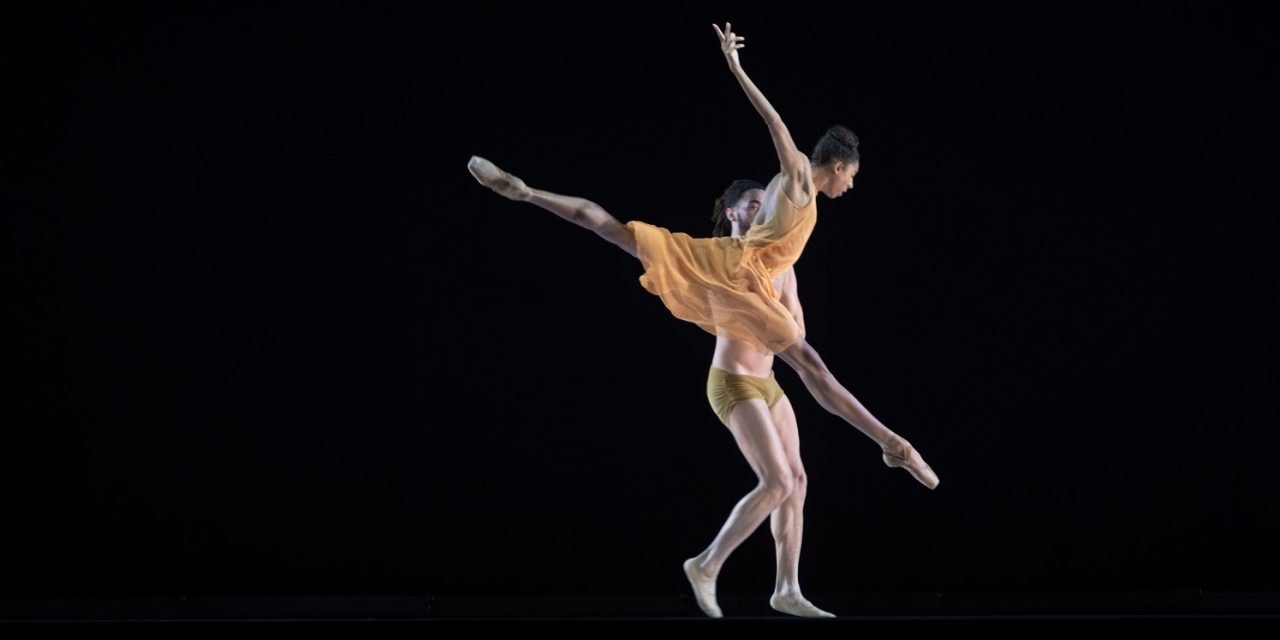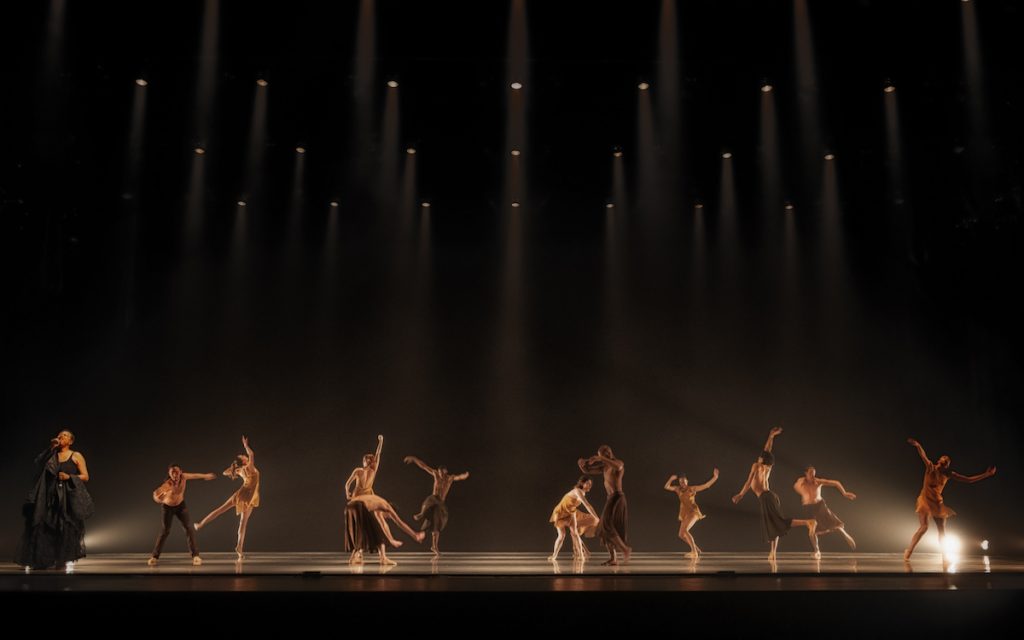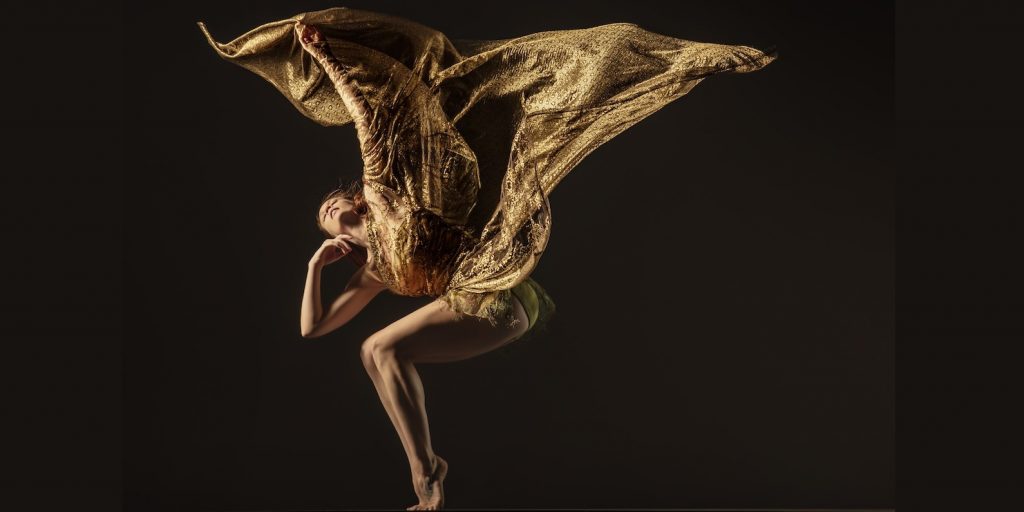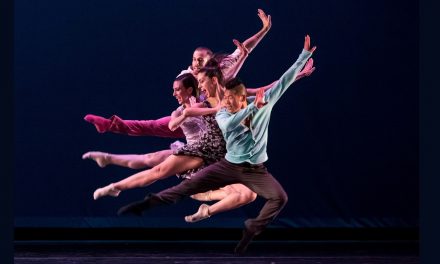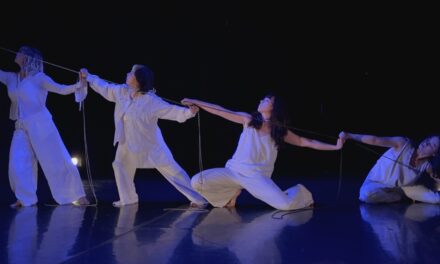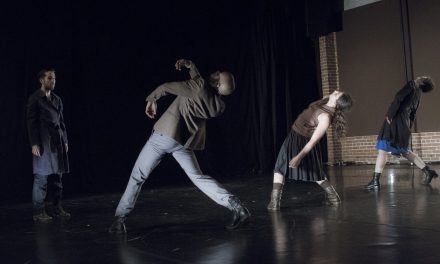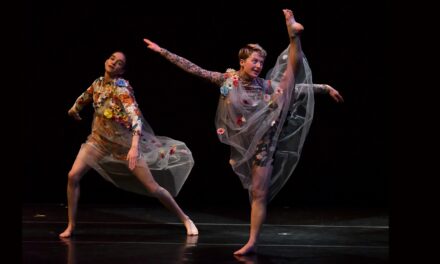Alonzo King LINES Ballet brought its work, Deep River (World Premiere in May 2022), to the Segerstrom Center for the Arts in Costa Mesa, CA. The 90-minute work features a 10-member ensemble (Babatunji, Adji Cissoko, Madeline DeVries, Shuaib Elhassan, Joshua Francique, James Gowan, Ilaria Guerra, Maya Harr, Marusya Madubuko, Tatum Quinonez) with Lighting Design by Jim French, Costume Design by Robert Rosenwasser, and Sound Design by Philip Perkins, whose contribution brings together vocals by Grammy Award-winning vocalist Lisa Fischer, original music by Jason Moran, and music from Pharoah Sanders, Maurice Ravel, and James Weldon Johnson.
The curtain rises to the full ensemble standing in soft amber light. They are standing resolute, looking out over the audience in varied, iterative poses. Their bodies are slightly angled in different directions. In silence, they all begin to move, each person making their own declaration until, in solidarity, they are again still. Soloist Marusya Madubuko continues until she finishes what she has to say. As she brings her statement to a close and stills herself with her arm reaching toward the heavens, the music begins.
Out of the silence, vocalist Lisa Fischer’s voice emerges. It is heavenly, floating effortlessly across low moans and high “Oohs.” It is arresting as it saturates the space with a deep warmth like the penetrating light from a rising sun.
The work proceeds to take us on an episodic odyssey that seamlessly moves between shifting groupings of soloists, quintets, duets, and trios. Amidst the various stagings, there is a regular return to the full ensemble on stage. With most of the movement individualized (no two dancers doing the same thing), the cycle of bringing the whole cast again and again to the stage feels like a return home, a call to togetherness.
Deep River has a specific and repetitive movement palette that evokes the creation of a masterful visual artist who makes a beautiful work consisting only of tones of green—limbs retracting into the core and extending into space with piercing force, dancers spiraling around themselves in exploratory configurations, highly punctuated phrasing, and the voluble use of idiosyncratic gestures transitioning between shapes with an elegant angularity.
Amidst the repetitive motifs, there are many moments of evocative imagery and times where the contributions of all the collaborators—costume, lighting, movement, and sound design—come together in the most breathtaking ways.
In one interlude, Shuaib Elhassan emerges from the upstage right corner carrying a vulnerably limp Adji Cissoko in his arms. He carries her to the upstage center, lays her down, stretches out her limp body—as if to give them both an up and an incredibly difficult journey—struggles to pick her back up, and continues on his journey. It was so simple. But it was so beautiful.
In another interlude, Cissoko jumps up onto Josh Francique, who recoils back into a hinge as he is supported by James Gowan and Theo Duff-Grant. Like a spring let loose, Francique’s body rushes forward and tosses Cissoko into the air. She is caught by Babatunji who drags her back toward stage left. He then gathers her and runs her forward where she propels herself yet again onto Francique. This sequence of propelling, retreating, and advancing repeats itself again and again.
James Gowan and Madeline DeVries bring a welcome change of pace when the duet embodies the hilarity and looseness of uncontrollable laughter. Against Perkin’s sound design, which at this point fills the space with sounds of laughter, the two dancers slap one another, trip over the other, and jump on each other with such commitment to absurdity that it draws bursts of laughter from the delighted audience.
The evening was deeply fulfilling but three moments were by far my favorite. The first moment was Babatunji’s applause-inducing solo to Jason Moran and Lisa Fischer’s heart-stopping rendition of James Weldon Johnson’s hymn, “Lift Every Voice and Sing,” reverentially known as “The Negro National Anthem.” The other moments were two pas de deux sequences between Adji Cissoko and Shuaib Elhassan. In these three dancers, I see the essence and promise of the LINES vernacular. In their respective performances, each of them breathtakingly makes this work their own and brings great beauty, warmth, and humanity to an already beautiful language.
For more information about Alonzo King LINES Ballet, please visit their website.
For more information about The Segerstrom Center for the Arts, please visit their website.
Written by Marlita Hill for LA Dance Chronicle.
Featured image: Alonzo King LINES Ballet – Photo by Denise Leitner

